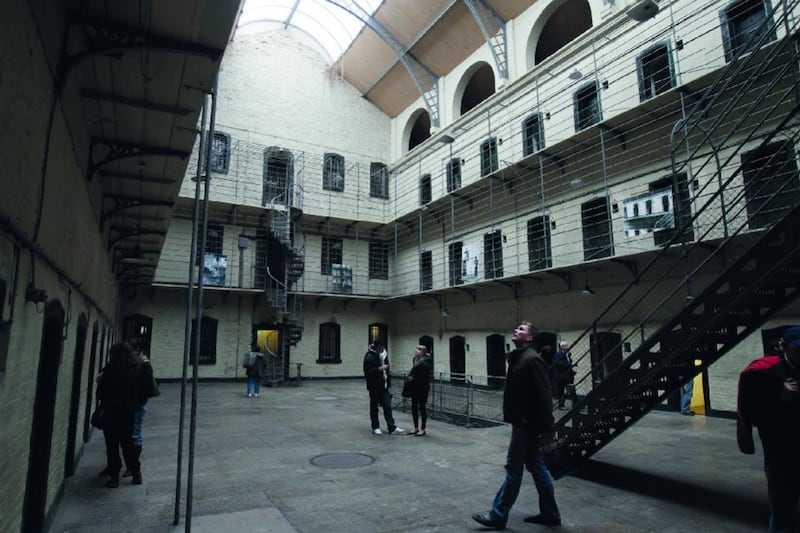THE gates through which three IRA prisoners escaped Dublin's Kilmainham Gaol during the War of Independence have gone on display in the prison-turned museum.
The display was originally intended to coincide with the centenary of the famous 1921 escape, but plans were put on hold due to the Covid pandemic.
Now both the gates and the padlock cut open by the determined escapees will finally be available to view at the site, which is run by the Republic's Office of Public Works (OPW).
Prisoners Ernie O’Malley, Simon Donnelly and Frank Teeling made their daring escape from what was then a British military barracks on Valentine's Day 1921.
The trio escaped with the aid of a sympathetic British soldier who provided a set of boltcutters used to snap open the padlock of the jail's main gate.
The escape has gone down in history as one of the most significant events of the war.
The gates opened by the IRA trio continued to hang at the western entrance to the gaol until the 1990s, when they were removed and placed into storage after being deemed no longer fit for purpose.
In 2019, the Office of Public Works embarked on a restoration project for the gates, which has been described as "among the most complex conservation projects ever undertaken" by the museum, due to the delicate process of preserving them.
A spokesperson for the OPW said: "The gates, which date from the mid-19th century, measure 2.64 metres wide by 2.85 metres high and have a combined weight of approximately 800 kilograms.
"It took almost a year and a half to dry the gates out alone, and only then could the painstaking process of consolidating the wood and treating the rusted metal begin."
Visitors to the display will learn of the escapees and also the prisoner who chose to stay behind.
Patrick Moran played a key role in planning the jailbreak, but remained on site as he did not wish to let down witnesses this upcoming trial who he believed would prove him innocent.
That mistake cost him his life as he was executed the following month after being found guilty of the murder of British soldiers in 1920.
Along with the gates, the cut padlock that allowed the trio to flee has been returned to the gaol for the first time since it was snapped in 1921, on loan from the National Museum of Ireland.
Other artefacts on display as part of the escape exhibition include a shirt collar used by Moran to smuggle a message to his family, and a 1936 first edition of O'Malley's memoir, which covers the escape in detail.
A new portrait of O'Malley, commissioned by his son Cormac and painted by artist Mick O'Dea is being displayed.








